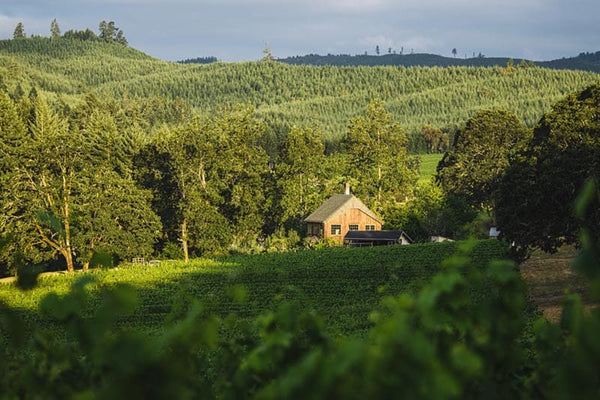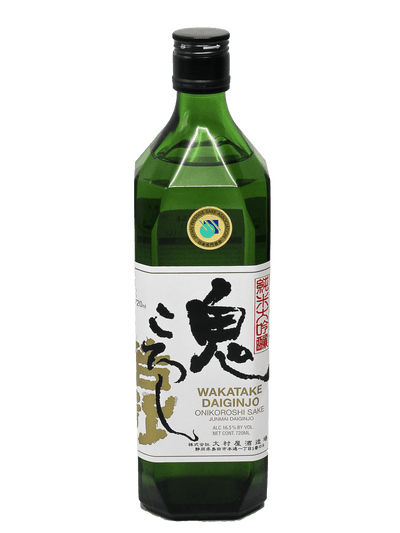A Rising Trend in Oregon Wines: The Distinctive Terroirs of the Willamette Valley

Oregon wines have come a long way in a lifetime. Most emblematic among the favored grape varieties is Pinot Noir, followed closely by Chardonnay and Pinot Gris, telling of this state’s cool-climate viticulture. Other wines grapes too, like Gewurztraminer and even Trousseau Noir find a home here. The greatest amount of wine production occurs in the vast, sheltered Willamette Valley, which runs north-south roughly from Portland to Eugene following the eponymous river.
Willamette Valley wines are becoming a celebrated brand, well recognized nationally and internationally, with several distinctive, smaller American Viticulture Areas (AVAs) located there. Yet, as recently as the 1970s, Oregon wine production was viewed as a kind of hobby or experiment. Last year, not only was a new AVA instated, but also the Willamette Valley earned formal recognition by the European Union of its Protected Geographical Indication (PGI) status, a major breakthrough for international commerce. Western European countries, particularly France, originally developed the concept of protecting iconic names linked to their geographical origin, including well-known products such as Champagne and Chablis. This represent an imprimatur of international quality.
Indeed, the Willamette Valley joins the famed Napa Valley as the only two American wine regions that bear this distinction. In France, the appellation d'origine controlee (AOC, “controlled designation of origin”) is a certification of authenticity granted to geographical indications for wines. Most products with an AOC designation also have a protected designation of origin (PDO) (appelation d'origine protegee, AOP) under EU law and UK law.
European Union Ambassador Stavros Lambrinidis said: “As a registered Protected Geographical Indication, the Willamette Valley name is secured throughout the EU market of 27 countries counting 450 million consumers.” He continued to say that anyone “seeking to sell non-originating wine using the registered Oregon name, or using labelling devices to evoke ‘Willamette Valley’ in the mind of the consumer, will be stopped.” He stated, “for the EU consumer, the PGI is the guarantee of authenticity: that every bottle meets the quality standard set by the Willamette producers.”
Oregon’s new AVA is Lower Long Tom, established in November, 2021, where creekside vine roots pass through shallow Bellpine topsoils seeking water and nutrients in the limestone below. The AVA runs along a watershed between Corvallis and Eugene. Lower Long Tom joins a group of other viticultural areas established in the early 2000s, nested inside the larger Willamette Valley AVA: Chehalem Mountains, Dundee Hills, Eola-Amity Hills, McMinnville, Ribbon Ridge, and Yamhill-Carlton. The Cascade Mountains protect this scenic valley to the east, with the Coast Range mountains to the west, and a chain of low hills to the it’s extreme north. Grapes grow on lower hillsides, avoiding the fertile alluvial soils on the valley floor and cooler hilltop mesoclimates, both of which would negatively affect wine grape quality.
Lower Long Tom also represents a notable recent trend towards recognizing new, distinct terroirs in Oregon. The Van Duzer Corridor AVA was created in January 2019 while the Tualatin Hills and Laurelwood District AVAs were approved in June 2020.
Why so many smaller areas within the valley? If we compare Oregon and France’s Bourgogne—both home to premier Pinot Noir production-- the answer seems obvious. The Bourgogne region is recognized around the world for its prestigious AOCs, with 84 appellations to its name, representing more than 23% of all AOCs attributed to French wines. This exceptional profusion within a small geographic area has its roots in vineyard diversity. There can be slight differences between neighboring plots, in terms of their aspect and/or soil type, with distinctive resulting wines. Each gets its own appellation.
Likewise in Oregon. A “small distance differences in the valley often yield wines of distinctively different character,” says the Willamette Valley Wineries Association. Chehalem, for example, is an uplifted landmass southwest of Portland in the northern part of the valley, including several spurs, mountains and ridges, such as Ribbon Ridge and Parrett Mountain, as well as the highest point within the Willamette Valley, Bald Peak at 1,633 feet. The altitude affects weather on the adjoining grape growing hillsides. “It is the geography and climate that differentiate this AVA from others,” says the Wineries Association.
To get a taste of Willamette Valley wines, consider the 2019 King Estate Inscription Pinot Noir or the 2019 La Crema Willamette Valley Pinot Noir. Then, delve into wines from some of the small AVAs: the 2018 Geodesy Chehalem Mountain Vineyard Pinot Noir scored a 93 with Wine Enthusiast for its lush blueberry and plum fruit flavors accented by fresh herbes de Provence and highlights of toasted walnuts. Or savor something different from Pinot Noir, like the organically-farmed 2018 James Rahn Omero Vineyard Trousseau Noir, an old variety of red wine grape originating in eastern France that produces cherry red wines with balanced alcohol and sour candy acidity, with red berry fruit flavors. Only 137 cases of this particular Ribbon Ridge AVA wine were produced. Time to taste Oregon terroir!
Written By: Charlie Leary


















Leave a comment